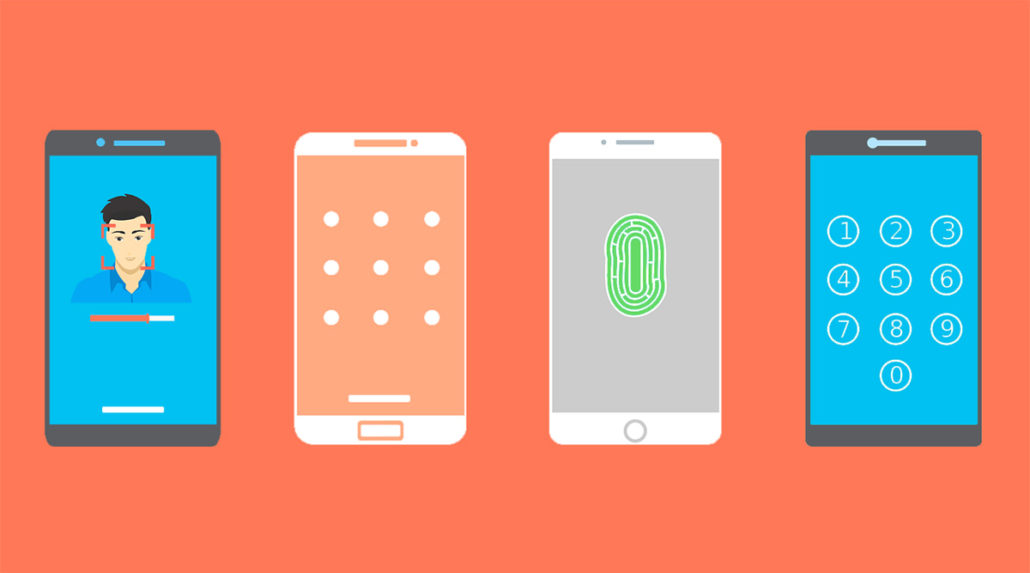As we reach midway through the year, it’s time to reflect on the cybersecurity industry and what we can look forward to. While cyber-attacks are increasing year after year, so are the changes in security trends, best practices, and technologies – for both cyber defenders and cyber criminals. See if your online organization is up-to-date with the latest cyber security trends for 2019:

The Growth of Biometric Security
Biometric Security is a security mechanism which uses physical attributes such as your face or fingerprint to allow for instant verification of your identity. Biometrics establishes a connection between your physical self, your online accounts, and your digital records. As technology has grown there has also been a surgence and acceptance of biometric security. Not only is this a fairly easy way to defend your devices, but it’s very effective and unique only to the primary user.
Innovations in biometric security include Face ID, eye retina scans, and finger vein technology.
Internet of Things (IoT) Usage
Another growing technological channel is the Internet of Things (IoT). As we become more dependent on the Internet, we begin to automate more of our life with some sort of digitally connected device or application. In fact, it’s predicted that by 2020 there will be roughly 200 billion connected devices. In 2018, Symantec stated that IoT attacks had increased by over 600 percent. Unfortunately, due to unsecured IoT endpoints, hackers can now gain unauthorized access to personal data much easier than before.
Growing attacks have led organizations to find effective ways of enhancing visibility on their IoT devices and networks.
Increasing Data Protection Regulations
International and governmental regulations that relate to data privacy will continue to increase and become more strict throughout the next few years. Regulations help organizations to meet expectations and satisfy their customers. The General Data Protection Regulation (GDPR) which came into effect in 2018, was created to protect the personal information of European Union citizens and companies that operate within the EU must comply with GDPR or face extreme penalties and fines.
Regulations such as the GDPR help secure the storage of personal information, the sharing and the management of personal information. Evolving markets now provide companies with the right tools to meet compliance but standards are changing worldwide. Recently, the Department of Financial Services (DFS) passed the 23 NYCRR 500 law which mandates companies have a designated security team and CISO, among others. Organizations must learn to be proactive about evolving with the cyber security industry.

Artificial Intelligence and Machine Learning
Artificial Intelligence (AI) and Machine Learning is being used by organizations to scale up their data protection efforts. AI makes it possible for machines to learn from experience, adjust, and perform human-like tasks, such as security monitoring.
A growing percentage of cyber security professionals now make use of machine learning. Machine learning algorithms can help organizations to accelerate how incidents are detected and responded to. Machine learning also helps to identify risks and communicate such risks to businesses.
The Zero Trust Model
The Zero Trust model evaluates the actions and behavior of individuals in order to identify threats and eliminate them. Simply, it eliminates the idea that people are trustworthy, and they mean you no harm.
Zero Trust model makes use of a users IP address, physical location, permission and many others to determine the validity of a user’s behavior. It makes use of risk scores and it runs simulations to improve cybersecurity. Those who are worried should also know that 90 percent of cyber incidents are due to human error.

Gone Phishing
Phishing attacks are a growing security threat that continues to affect unsuspecting users. A study revealed that 62 percent of small businesses have experienced phishing attacks over the last few years and that percentage is rising. Phishing is a technique used by hackers to obtain sensitive information by using fraudulent links, landing pages, e-mails, etc. designed to trick people into divulging personal or confidential data such as passwords and bank account information. Businesses now must adopt cybersecurity education programs if they want to understand how to decipher between what’s real and what’s phishing.





